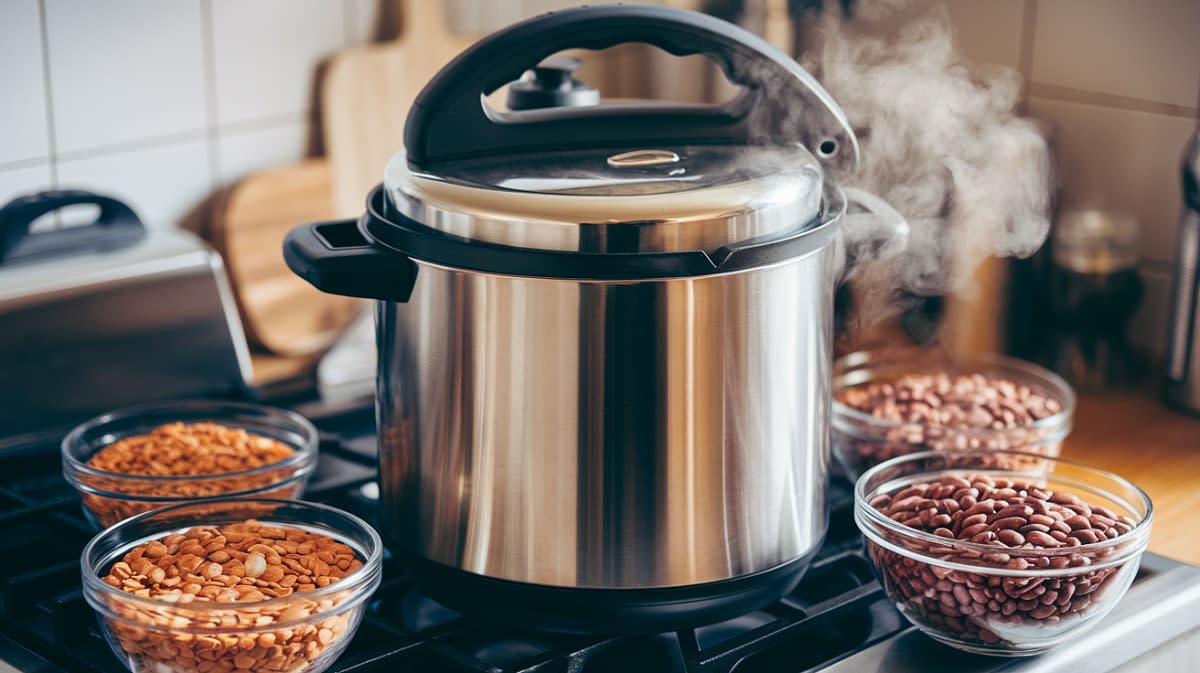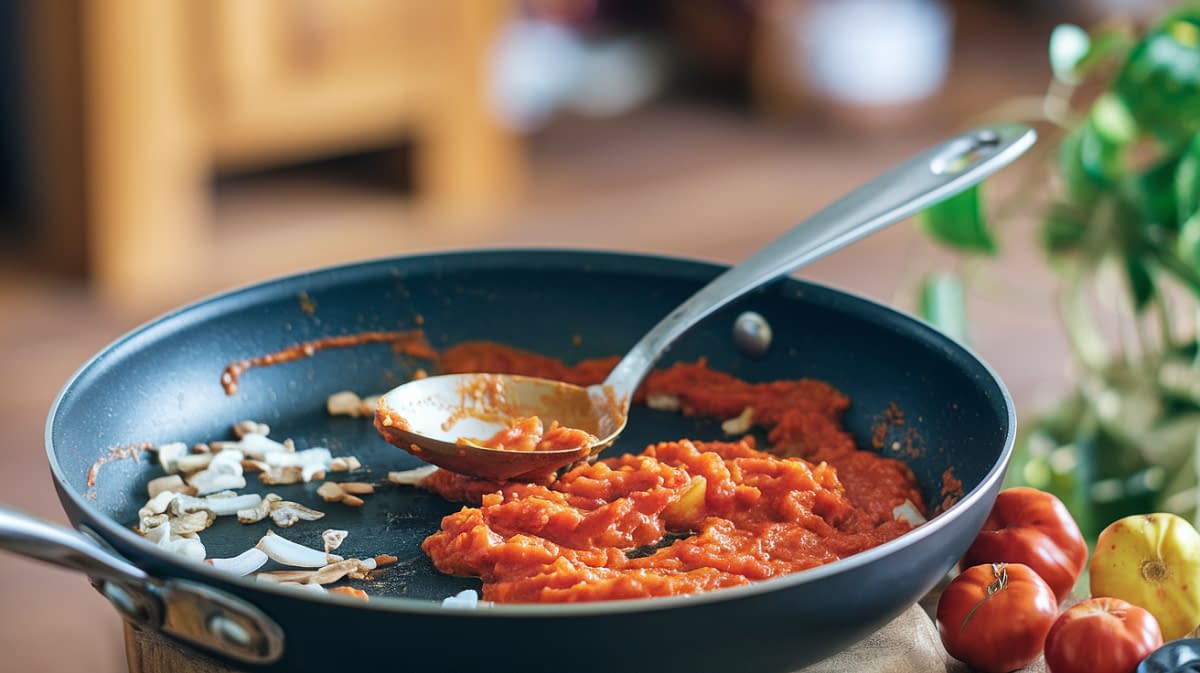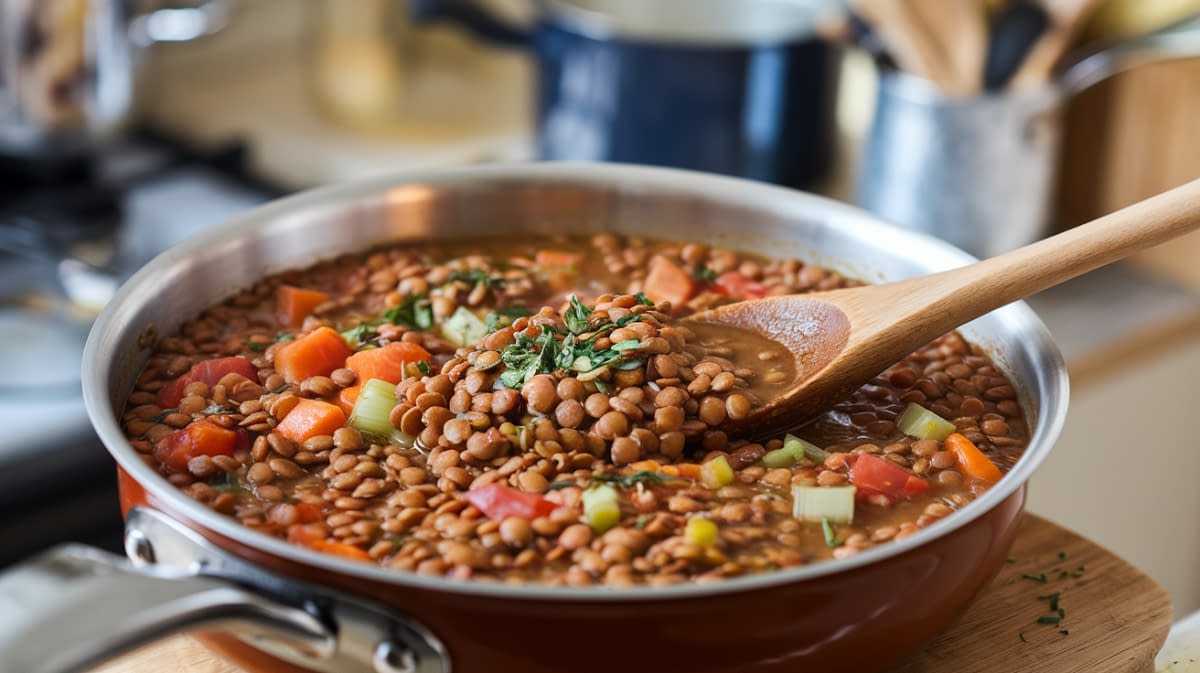Dal Makhani Recipe
Dal Makhani is a creamy, buttery, and rich lentil curry originating from Punjab, India. Made with whole black lentils (urad dal), red kidney beans (rajma), and a medley of aromatic spices, this restaurant-style dish is slow-cooked to perfection for deep, earthy flavors. It’s a comforting, indulgent recipe perfect for special occasions or cozy dinners.
- 1 cup whole black lentils (urad dal)
- 1/4 cup red kidney beans (rajma)
- 4 cups water
- 2 tbsp butter (unsalted)
- 1 tbsp oil
- 1 medium onion (finely chopped)
- 3 medium tomatoes (pureed)
- 1 tbsp ginger-garlic paste
- 2 green chilies (slit)
- 1 tsp cumin seeds
- 1/2 tsp turmeric powder
- 1 tsp red chili powder
- 2 tsp coriander powder
- 1/2 tsp garam masala
- 1/2 cup heavy cream
- 1/4 cup milk (optional)
- 1 tbsp butter
- 2 tbsp fresh cilantro (chopped)
- 1 tbsp fresh cream
- 1 Cook the Lentils and Beans
Rinse the soaked lentils and kidney beans. Add them to a pressure cooker with 4 cups of water and a pinch of salt. Cook on high heat for 6–7 whistles or until the lentils are tender.
- 2
Prepare the Base MasalakHeat butter and oil in a large pan. Add cumin seeds and let them splutter. Stir in onions and sauté until golden brown. Add ginger-garlic paste and green chilies, and cook for 1–2 minutes. Mix in the tomato puree, turmeric, chili powder, and coriander powder. Cook until the oil separates.
- 3
Simmer the Lentils with MasalaAdd the cooked lentils and kidney beans along with the cooking water to the pan. Stir well, mash slightly for a creamier consistency, and simmer for 20–25 minutes on low heat.
- 4
Add Cream and GarnishStir in the heavy cream and milk. Adjust salt and simmer for another 5 minutes. Add a dollop of butter on top, sprinkle with cilantro, and swirl in fresh cream before serving.
NoteSoaking the lentils and beans overnight is essential for faster cooking and better texture.
You can replace heavy cream with cashew cream for a vegan version.
Leftover Dal Makhani tastes even better the next day as the flavors deepen.
Indian cuisine, creamy lentils, vegetarian, comfort food, slow-cooked - 2



